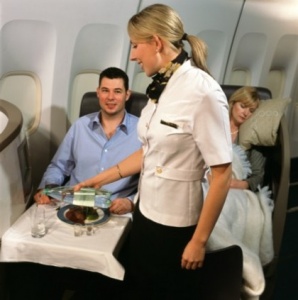Stewardess wins landmark toxic cabin fumes case

The Australian High Court has awarded a six-figure payout to a former air stewardess exposed to toxic aircraft fumes while pregnant.
Joanne Turner was 25 weeks pregnant and working for East-West Airlines when a cloud of smoke entered the cabin on descent during a flight from Sydney to Brisbane in 1992.
She experienced sore eyes, a burning throat, a headache and a persistent cough as a result of the fumes, which resulted from an oil leak.
Joanne Turner originally sued the airline in 2001, but it has taken 10 years for her to be awarded £84,000 in damages, after the now defunct airline and its insurer, QBE, appealed against the decision.
‘‘I’m just very relieved that it’s finally over and I hope the fight will help other air crew who are out there,’’ Ms Turner said.
ADVERTISEMENT
This ruling against ‘‘aerotoxic syndrome’’ and could prove a landmark case.
Experts estimate that up to 200,000 passengers each year may contract illnesses caused by breathing in toxic air in the cabin.
The toxins can enter the cabin as a result of the “bleed air” system that is used on modern aircraft. Air is drawn out of the compression section of the engine and cooled. It then enters the cabin, where it mixes with recirculated air that has passed through filters designed to remove bacteria and viruses
.
But the “recirculated air” filters do not remove fumes or vapours from the engine. So if engine oil or hydraulic fuel leaks, toxic chemicals can contaminate the air supply, scientists say.
Scientists, former pilots and aviation pressure groups have accused the industry of knowing about the problem for decades and doing little to tackle it.
Some scientists also claim that it can pose a risk to unborn babies and affect gene expression.
The Civil Aviation Authority said it was aware of Mrs Turner’s case but was awaiting the results of research into cabin air quality at Cranford University, led by the Department for Transport.
The Boeing Dreamliner 787, due to be launched next year, will be the first passenger jet since the mid-Fifties to use air supplied from a source other than the engine.

